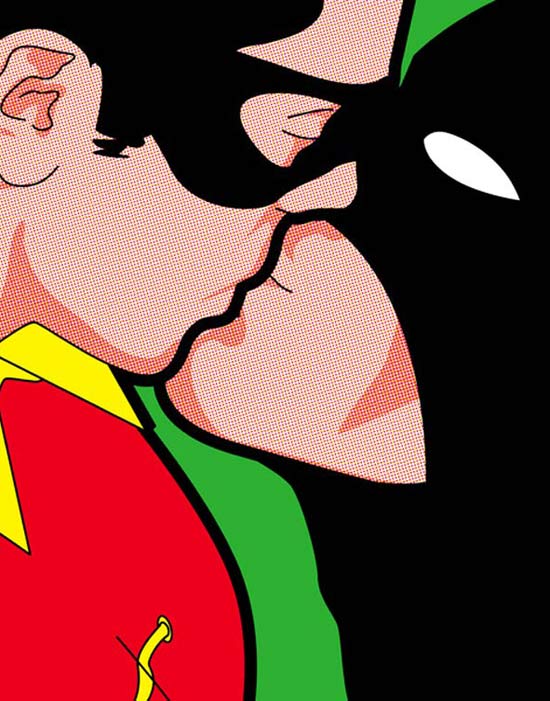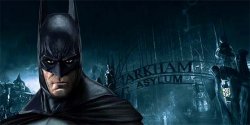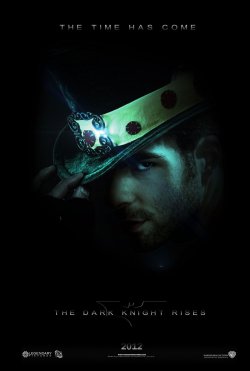Abishai100
VIP Member
- Sep 22, 2013
- 4,959
- 250
- 85
This semi-novelized introduction into the world of the caped crusader Batman (DC Comics) offers readers a glimpse into the psychological angst that drives Gotham City's most prominent businessman and socialite Bruce Wayne to tackle modern urban life's most challenging criminally insane terrorists.
The illustrations by David Mazzucchelli and coloring by Richmond Lewis and lettering by Todd Klein bring to life the offbeat urban sensibilities that create modern perceptions of evil and terror.
The story presents the beginnings of Bruce Wayne as Batman, journeying to lands and training in skills to hone his interest for vigilantism. He meets the new Gotham City police commissioner James Gordon and forms an unlikely friendship.
"On a surveillance mission to the seedy East End, a disguised Bruce is propositioned by teenaged prostitute Holly Robinson. He is reluctantly drawn into a brawl with her violent pimp and is attacked by several prostitutes, including dominatrix Selina Kyle. Two police officers shoot and take him in their squad car, but a dazed and bleeding Bruce breaks his handcuffs and causes a crash, dragging the police to a safe distance before fleeing. He reaches Wayne Manor barely alive and sits before his father’s bust, requesting guidance in his war on crime. A bat crashes through a window and settles on the bust, giving him the inspiration to become a bat" (source of brief: Wikipedia).
Batman bursts into a dinner party hosted by Gotham City's corrupt politicians and crime bosses and announces his intentions to restore civility and order. Meanwhile, the sneaky Selina Kyle (future semi-friend of Batman) dons a cat costume and decides to pursue an offbeat life of crime-engagement of her own (eventually calling herself Catwoman).
Assistant district attorney Harvey Dent becomes a semi-ally of Batman, though Dent will someday become the emotionally rageful terrorist Two-Face.
"In the final scenes of the comic, Gordon is promoted to captain and stands on the rooftop waiting to meet Batman to discuss somebody called The Joker, who is plotting to poison the reservoir" (source of brief: Wikipedia).
This Frank Miller work is well-composed and we can see how it motivated film-makers to adapt it into animated features; successful Batman film-maker Christopher Nolan infers inspiration from it as well, and the recent praised Batman adapted television series "Gotham" (Fox TV), which presents stories of a young Bruce Wayne coping with grief and contemplating vigilantism as a young Jim Gordon deals with Gotham City's developing nemeses such as Penguin, also seem to draw inspiration from Miller's story arc.
"Batman: Year One" (Frank Miller) offers comic book fans a portrait of America's most popular urban vigilante and presents psychological insights into the mania and meditation involved with the caped crusader's understanding of the street-chaos forces in modern urban life that create claustrophobic criminality.
The work is satisfying and comprises another trophy in the treasure chest of American comic book fanfare surrounding modern age vigilantism hysteria. The only criticism I have is that the overall complexity of the character of Bruce Wayne/Batman poses a serious challenge for Frank Miller; like other handlers of the Batman stories, Miller seems a bit nervous about dealing with criminality mania, and so the storyboards come across as somewhat pedestrian. Nevertheless, it is successful in merging police/detective stories with vigilantism intrigue.

Batman Year One - Wikipedia the free encyclopedia

The illustrations by David Mazzucchelli and coloring by Richmond Lewis and lettering by Todd Klein bring to life the offbeat urban sensibilities that create modern perceptions of evil and terror.
The story presents the beginnings of Bruce Wayne as Batman, journeying to lands and training in skills to hone his interest for vigilantism. He meets the new Gotham City police commissioner James Gordon and forms an unlikely friendship.
"On a surveillance mission to the seedy East End, a disguised Bruce is propositioned by teenaged prostitute Holly Robinson. He is reluctantly drawn into a brawl with her violent pimp and is attacked by several prostitutes, including dominatrix Selina Kyle. Two police officers shoot and take him in their squad car, but a dazed and bleeding Bruce breaks his handcuffs and causes a crash, dragging the police to a safe distance before fleeing. He reaches Wayne Manor barely alive and sits before his father’s bust, requesting guidance in his war on crime. A bat crashes through a window and settles on the bust, giving him the inspiration to become a bat" (source of brief: Wikipedia).
Batman bursts into a dinner party hosted by Gotham City's corrupt politicians and crime bosses and announces his intentions to restore civility and order. Meanwhile, the sneaky Selina Kyle (future semi-friend of Batman) dons a cat costume and decides to pursue an offbeat life of crime-engagement of her own (eventually calling herself Catwoman).
Assistant district attorney Harvey Dent becomes a semi-ally of Batman, though Dent will someday become the emotionally rageful terrorist Two-Face.
"In the final scenes of the comic, Gordon is promoted to captain and stands on the rooftop waiting to meet Batman to discuss somebody called The Joker, who is plotting to poison the reservoir" (source of brief: Wikipedia).
This Frank Miller work is well-composed and we can see how it motivated film-makers to adapt it into animated features; successful Batman film-maker Christopher Nolan infers inspiration from it as well, and the recent praised Batman adapted television series "Gotham" (Fox TV), which presents stories of a young Bruce Wayne coping with grief and contemplating vigilantism as a young Jim Gordon deals with Gotham City's developing nemeses such as Penguin, also seem to draw inspiration from Miller's story arc.
"Batman: Year One" (Frank Miller) offers comic book fans a portrait of America's most popular urban vigilante and presents psychological insights into the mania and meditation involved with the caped crusader's understanding of the street-chaos forces in modern urban life that create claustrophobic criminality.
The work is satisfying and comprises another trophy in the treasure chest of American comic book fanfare surrounding modern age vigilantism hysteria. The only criticism I have is that the overall complexity of the character of Bruce Wayne/Batman poses a serious challenge for Frank Miller; like other handlers of the Batman stories, Miller seems a bit nervous about dealing with criminality mania, and so the storyboards come across as somewhat pedestrian. Nevertheless, it is successful in merging police/detective stories with vigilantism intrigue.

Batman Year One - Wikipedia the free encyclopedia


